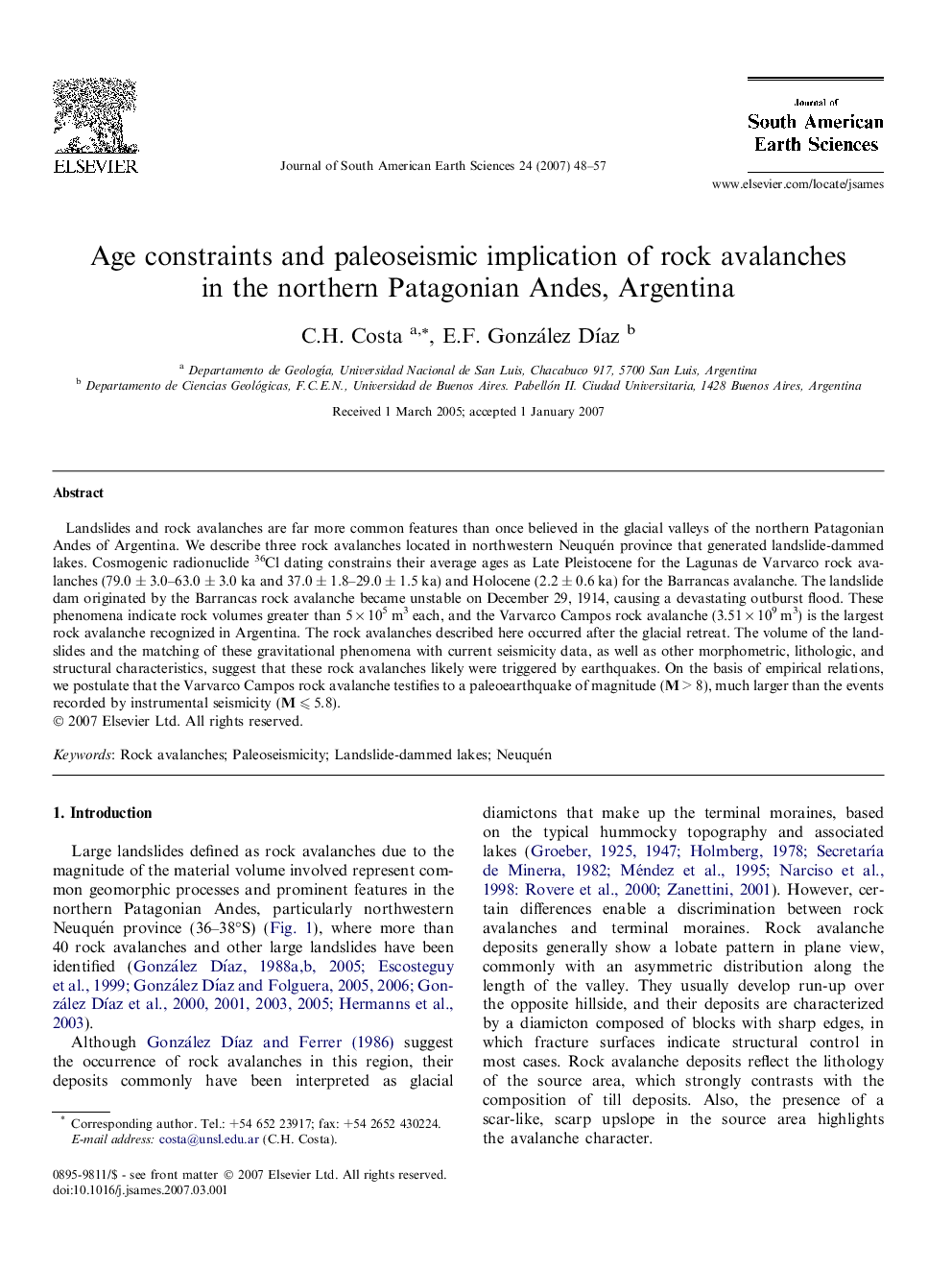| Article ID | Journal | Published Year | Pages | File Type |
|---|---|---|---|---|
| 4683013 | Journal of South American Earth Sciences | 2007 | 10 Pages |
Abstract
Landslides and rock avalanches are far more common features than once believed in the glacial valleys of the northern Patagonian Andes of Argentina. We describe three rock avalanches located in northwestern Neuquén province that generated landslide-dammed lakes. Cosmogenic radionuclide 36Cl dating constrains their average ages as Late Pleistocene for the Lagunas de Varvarco rock avalanches (79.0 ± 3.0-63.0 ± 3.0 ka and 37.0 ± 1.8-29.0 ± 1.5 ka) and Holocene (2.2 ± 0.6 ka) for the Barrancas avalanche. The landslide dam originated by the Barrancas rock avalanche became unstable on December 29, 1914, causing a devastating outburst flood. These phenomena indicate rock volumes greater than 5 Ã 105 m3 each, and the Varvarco Campos rock avalanche (3.51 Ã 109 m3) is the largest rock avalanche recognized in Argentina. The rock avalanches described here occurred after the glacial retreat. The volume of the landslides and the matching of these gravitational phenomena with current seismicity data, as well as other morphometric, lithologic, and structural characteristics, suggest that these rock avalanches likely were triggered by earthquakes. On the basis of empirical relations, we postulate that the Varvarco Campos rock avalanche testifies to a paleoearthquake of magnitude (M > 8), much larger than the events recorded by instrumental seismicity (M ⩽ 5.8).
Related Topics
Physical Sciences and Engineering
Earth and Planetary Sciences
Earth and Planetary Sciences (General)
Authors
C.H. Costa, E.F. González DÃaz,
